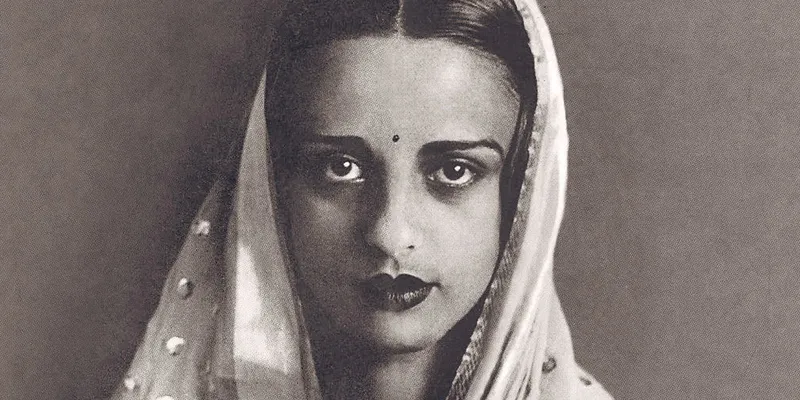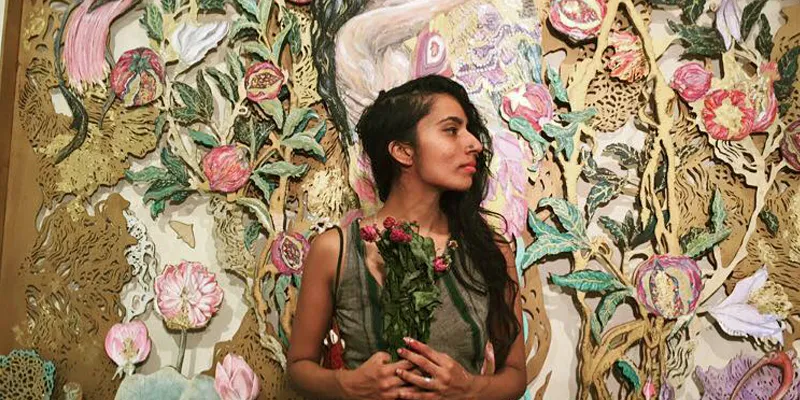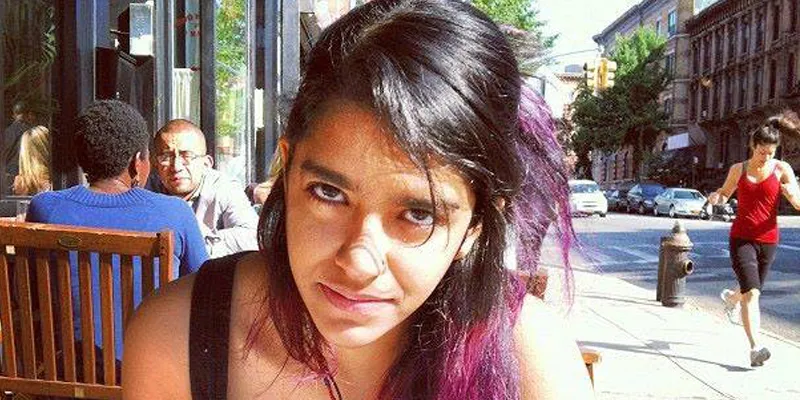India’s women artists may have evolved with time, but have the issues they’re fighting done the same?
“A work of art is the trace of a magnificent struggle.” – Grace Hartigan, American abstract expressionist painter.
The women of India have been embroiled in a constant struggle against stigmatisation and persecution by society for centuries. All the while, countless attempts have been made to spread awareness about, and ultimately bring to an end, the charge of horrific gender-biased crimes (like sati, dowry harassment, and sexual assault) perpetuated in the name of a misguided notion of 'culture' and 'tradition'.
Art has always been one of the most widely used mediums for expressing the plight of women in India. Indian women artists, in particular, have emphasised gender issues and discrimination in the form of paintings, sculptures, and installations since pre-independence times. And despite the decades that have transpired since, most of the same issues are still prevalent in today's society. In this article, we go through the history of Indian women artists and the issues they’ve addressed in their work to see what, if anything, has changed in all these years.

Amrita Sher-Gil
The most famous woman artist from India's pre-independence era, Amrita Sher-Gil is responsible for influencing entire generations of painters with her artwork. Born in Hungary, Budapest in 1913 to a Punjabi-Sikh father and a Hungarian mother, Sher-Gil's earlier work was inspired by the European culture and style which she acquired during her residency and education in Paris. Sher-Gil's captivating self-portraits bestowed upon her the title of India's Frida Kahlo. Her return to India in 1934 sparked a thematic change in her artwork, which now incorporated traditional Indian art styles marked by the vivid use of colours and the Renaissance-era 'chiaroscuro' technique, through which she portrayed the culture, despair, and poverty of Indian villagers. Sher-Gil died at the tender age of 28 in Lahore having achieved critical, if not commercial, success. Posthumously, however, her paintings rapidly gained recognition around the world and she is now hailed as one of the most prominent Indian artists of all time.

Nilima Sheikh
Nilima Sheikh, born in 1945 in Delhi, is a painter whose most prominent work revolves around woman-centric themes. A proponent of gender equality, Sheikh's work reveals the injustice and horrors faced by the women of India. Her most famous work, 'When Champa Grew Up' (1984), is a series of 12 tempera paintings that detail a true story of a young girl who gets married and then suffers torture and immolation at the hands of her husband's family. A student of history before she took up painting, Sheikh has always maintained a traditional aspect in her work, drawing inspiration from Mughal and Rajput painters, which represents everyday life with a poetic vibrancy. Sheikh experimented with various styles of painting — from the hand-held miniature and conventional oil-in-canvas to scrolls and screens for the theatre stage. Sheikh has come a long way since her first solo exhibition in 1983 and is now one of India's most recognised woman artists around the world.
Arpita Singh
Arpita Singh, born in 1937, is a contemporary painter who has championed the perspective of women in her work. Using a vibrant colour palette dominated by pink and blue hues in her paintings, Singh portrays the everyday problems faced by women in a range of emotions — from suffering and sorrow to joy and hope. Even though her paintings typically revolve around the female form, Singh often incorporates flowers, animals, and inanimate objects to frame the central perspective. A stalwart of traditional Indian art forms such as miniature paintings and folk art, Singh's work ranges from drawings to oil-in-canvas and water colour on paper. Since her first solo exhibition in New Delhi in 1972, Singh has participated in numerous solo and group shows across the world in cities like Amsterdam, Berlin, Athens, London, Istanbul, and Belgrade. In 2011, she was awarded the prestigious Padma Bhushan award for her distinguished contributions to Indian culture and art.
Anjolie Ela Menon
A recipient of the Padma Shri award and recognised among India's best contemporary artists, Anjolie Ela Menon (born in 1940) has created stunning paintings encompassing myriad themes. Her oil paintings, murals, and glass colours feature themes of religion, self-portraits, and landscapes. Some of Menon's most renowned works, such as 'Shabnam', explore the self-expression of women, revealing their supressed emotions and sensuality in often varying artistic styles. Menon’s earlier work was influenced by artists like Vincent van Gogh, Modigliani, Amrita Sher-Gil, and MF Husain. As she grew older, however, Menon's artistic style evolved continuously as she was determined not to get trapped in a specific category. Menon's artworks have featured at countless exhibitions, the most recent being ‘Menongitis – Three Generations of Art’ at Dhoomimal Gallery, New Delhi, in 2008. Regarded as India's finest muralist, Menon has represented the country at numerous international shows and exhibitions; she has also been invited by the British, US, and French governments to confer with leading artists of their countries.
Jayasri Burman
Jayasri Burman is a contemporary painter whose art is a vivid blend of strong feminine themes and mythical elements. Women serve as the fundamental theme of Burman's paintings; she portrays women in fantastical forms representative of their struggles and strengths. At a glance, Burman's paintings can instantly be recognised as having an inherent Indian folk art nature. But her art transcends the limits of the genre, blending feminine figures with nature and overlaid with fantasy (animal-human hybrid characters are common in her paintings). Burman, who was born in Kolkata in 1960, is widely recognised as one of India's most talented contemporary painters, and her work has been exhibited in some of the world's most prominent cultural hubs including New York, Berlin, London, and Paris.
Bharti Kher
One of India's most famous (and expensive) contemporary artists, Bharti Kher explores themes of misrepresentation and conflict in culture, the multiplicity of the individual self, and other fields like mythology and mystical creatures. Her art, which comprises paintings, sculptures, and installations, is renowned for incorporating bindis, which Kher uses to draw fluctuating parallels between tradition and modernity — challenging the role ascribed to women by traditional society. Her sculpture, 'The Skin Speaks A Language Not Its Own' (2006), depicts a dead or dying elephant covered in shiny bindis. Undoubtedly her most famous work, the sculpture was sold for $1.785 million at a 2013 New York auction — a feat that made Kher the most expensive Indian woman artist of all time. Kher's artistic endeavours have earned her numerous accolades among which are the Sanskriti Award, ARKEN Art Prize, and the Chevalier dans l'Ordre et des Lettres (Knight of the Order of Arts and Letters).
Shilo Shiv Suleman
Born in 1989 in Singapore, Shilo Shiv Suleman is an artist whose works revolve around themes of magical realism, social change, and technology. Suleman began her career as an illustrator; her first illustrated children's book was published when she was 16. Since then, she has progressed to creating interactive installation art pieces that fuse technology with human presence; she has designed apps that react to brainwaves, sculptures that glow with a person's breath, and installations that synchronise with heartbeats. Suleman's most popular installation — created in collaboration with architects, neuroscientists, and engineers — is called 'Pulse and Bloom'.

The breathtaking piece of interactive art, which featured 20 lotuses that synchronised with heartbeats using sensors, was displayed at the Burning Man festival in 2014 and won Suleman international acclaim. She is also a strong propagator of gender equality. In response to the horrific gang rape that took place in New Delhi in 2012, Suleman founded 'The Fearless Collective' — an organisation that agglomerates artists, activists, photographers, and filmmakers who use art to speak out against gender violence.
Prajakta Potnis
Prajakta Potnis, a Mumbai-born contemporary artist, creates unsettling artwork in photographs, paintings, sculptures, and installations. Potnis explores the systems that affect, and hold in place, individuals — whether it's family, society, the government, or even time and space; often ideating a ‘wall’ that separates individuals from the larger whole. In her work, Potnis depicts the relationship between private and public space; she showcases how an individual affects the external environment and how elements from the outside, in turn, affect an individual. She also depicts the emotions most common among women in today's society, such as fear and the need for control, in some of her works which include 'Still Life', 'The Kitchen Debate', and 'Porous Walls'. A few of her works, among which is her 2012 solo exhibition 'Time Lapse', also explore the passage of time as the main theme. Potnis has gained widespread international recognition for her work which has been featured at prominent galleries in New York, London, Berlin, Warsaw, and Shanghai, among others.
Tarini Sethi
An artist and illustrator, Tarini Sethi' explores themes of human intimacy and discomfort portrayed with surrealist overtones. Working mostly with pen and ink, Sethi produces artwork that unabashedly challenges the perspectives people have of themselves and others. In one of her recent projects called ‘Enemy-Friend-Lover’, Sethi invited people to send her photographs of themselves wearing the least amount of clothes possible, along with a few words. In exchange, Sethi promised to deliver a representation of them that is "jarring and possibly uncomfortable." Through her artwork, Sethi breaks the taboos of body-consciousness and she doesn't mind challenging society's notion of what is distasteful or perverse along the way.

Tara Anand
A young illustrator from Mumbai, Tara Anand had a bone to pick with Indian history — its portrayal, or lack thereof, of women warriors. Nonplussed by how the mainstream narrative either foregoes mentioning, or places in the shadow of men, the powerful women of Indian history, Anand began a series of illustrations called 'I am no man' to change it. Inspired by the famous line uttered by the Lord of the Rings character Eowyn, the illustration series reiterates the importance of women throughout Indian history. A staunch feminist, Anand not only wishes to challenge gender inequality in her artwork but she also wants to remove the stigma around castes, classes, and faiths as well.
Shilpa Gupta
As an interdisciplinary contemporary artist, Shilpa Gupta uses sound, video, photography, installations, and performance art as her mediums of expression. Often interactive work that relies on audience participation, her art explores a variety of themes that range from consumer culture, desire, and religion to security issues, nationalism, environmental degradation, and human rights. In her 2007–08 project called '100 Hand-Drawn Maps of India', Gupta asked viewers to draw the Indian map from memory in an attempt to redefine prevalent geo-political boundaries and societal divides. A significant number of her projects, though largely created by technological means themselves, ruminate on the dangers of the widespread technological dependence in today's world. Gupta's work, which has been displayed in myriad galleries (both in India and abroad) has led her to receive the Transmediale Award in Berlin and the Sanskriti Prathisthan award in New Delhi.
It is clear that the medium utilised by Indian women to create art has evolved with time and technology. But despite advances on that front, the social issues depicted in their art haven't undergone any radical change. The women of today still face prejudices and hardships, even if they have taken a different form, as their predecessors did almost a century ago. Consider the field of art itself: despite producing outstanding work which has merited international acclaim and propelled them to the pinnacle of the art world, Indian women have been, and continue to be, eclipsed by men.







